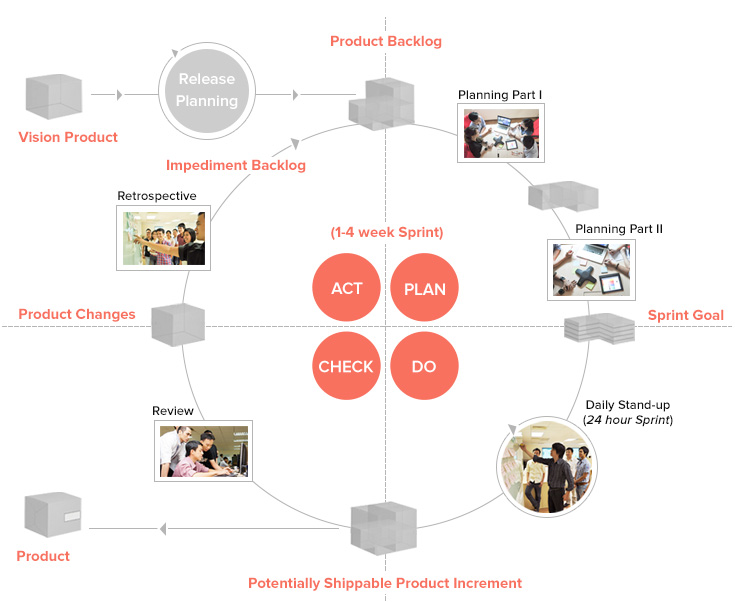What is Scrum?
At Orient Software, we develop software applications using the Scrum methodology. Scrum is an agile method for project management with an iterative approach. The Scrum methodology manages the development process through many small steps, rather than trying to plan everything upfront. Its primary goal is to maximize the customer’s ROI by creating working software rapidly and responding to changing requirements quickly.
Scrum relies on iterative development. This means that we focus on developing a product in short intervals of time (usually from two to four weeks). After each interval elapses, the direction of the project direction can be adjusted as needed to adapt to any new situation or circumstances. Each iteration is known as a “sprint” and results in software functionality that is developed and tested progressively. The software can be deployed or shipped to the end users. Clients can provide feedback on any or all of the intermediate software builds. Clients have many opportunities to change the direction of the project if warranted by changing circumstances.
The Scrum methodology facilitates an exploratory approach to software development. It releases our clients from the challenge of having to deliver full requirements documentation up front. The agility of Scrum improves the transparency of projects by providing regularly updated information on the status of software development. This ensures that no issues are swept under the carpet and all stakeholders are kept aware of the team’s progress at all times.

Scrum and Quality Assurance
At Orient Software, quality is much more than quickly putting an application together and testing it before delivery. We integrate QA work into each sprint. Instead of relying on the flawed practice of running many testing and bug-fixing cycles on software that has already been implemented, we strive to design and build systems with fewer bugs right from the start. This is made possible by automated unit testing and continuous integration – two key practices that we recommend to all of our clients for their software development projects.
